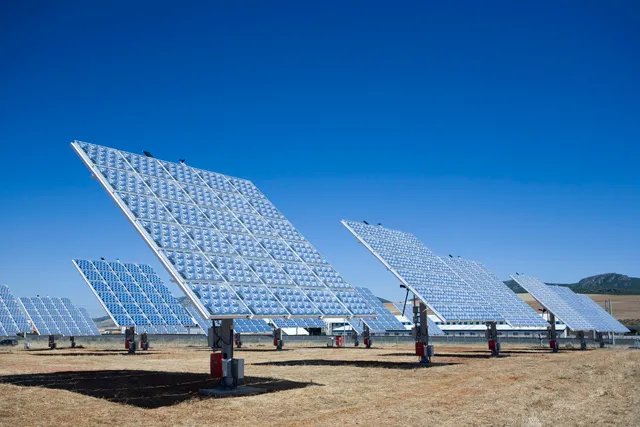As renewable energy sources become increasingly important in the world’s energy mix, solar energy has become a crucial component of this trend. Concentrated PV solar panels, or CPV panels, are one of the latest technologies in the solar industry. This article aims to provide a comprehensive guide to CPV solar panels, including their features, benefits, and drawbacks.
Introduction
Solar panels are devices that convert sunlight into electricity. They are made up of photovoltaic cells that are wired together to form a solar panel. CPV solar panels are a new type of solar panel that use lenses or mirrors to focus sunlight onto a small area of high-efficiency solar cells, resulting in a highly concentrated beam of sunlight.
How CPV Solar Panels Work
Concentrated PV solar panels use lenses or mirrors to concentrate sunlight onto a small area of high-efficiency solar cells, known as multi-junction solar cells. These cells are made up of several layers of different materials, each of which absorbs a specific portion of the solar spectrum. By using lenses or mirrors to focus sunlight onto a small area, They can achieve much higher efficiencies than traditional solar panels, which typically use silicon-based cells.

Advantages of CPV Solar Panels
Concentrated PV solar panels have several advantages over traditional solar panels, including:
Higher Efficiency
This type of solar panels can achieve much higher efficiencies than traditional solar panels. While traditional solar panels typically have efficiencies in the range of 15-20%, CPV solar panels can achieve efficiencies of 40% or higher.
Lower Costs
Although CPV solar panels are currently more expensive than traditional solar panels, they require less material to produce the same amount of electricity, resulting in lower overall costs in the long run.
Better Performance in Hot Climates
Concentrated PV solar panels perform better in hot climates than traditional solar panels, which can suffer from reduced efficiency at high temperatures.

Drawbacks of CPV Solar Panels
While Concentrated PV solar panels have several advantages over traditional solar panels, they also have some drawbacks, including:
Limited Applicability
CPV solar panels are only suitable for areas with high levels of direct sunlight. They are not suitable for cloudy or shaded areas.
Complexity
They are more complex than traditional solar panels and require more maintenance.
Applications of CPV Solar Panels
CPV solar panels are currently used primarily in utility-scale solar power plants, where their high efficiency and low cost of electricity production make them an attractive option. They are also being used in remote locations where traditional solar panels are not practical.
Conclusion
Concentrated PV solar panels are a new type of solar panel that use lenses or mirrors to focus sunlight onto a small area of high-efficiency solar cells, resulting in a highly concentrated beam of sunlight. They have several advantages over traditional solar panels, including higher efficiency and lower costs, but also have some drawbacks, including limited applicability and increased complexity. CPV solar panels are currently used primarily in utility-scale solar power plants and remote locations.
FAQs
How much more efficient are CPV solar panels than traditional solar panels?
- This type of solar panels can achieve efficiencies of 40% or higher, compared to 15-20% for traditional solar panels.
Are CPV solar panels suitable for areas with low levels of direct sunlight?
- No, they are only suitable for areas with high levels of direct sunlight.
What is the primary application of CPV solar panels?
- CPV solar panels are currently used primarily in utility-scale solar power plants and remote locations.
Are CPV solar panels more expensive than traditional solar panels?
- Yes, they are currently more expensive than traditional solar panels.
Are CPV solar panels more durable than traditional solar panels?
- Concentrated PV solar panels are not necessarily more durable than traditional solar panels, but they can be more resistant to heat and temperature fluctuations.